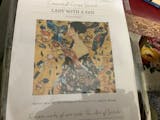Karl Bodmer (1)
Karl Bodmer (1809–1893) was a Swiss-born artist and watercolorist who is best known for his depictions of Native American life and the landscapes of the American West during the early 19th century. He traveled extensively with the German explorer Maximilian, Prince of Wied, as part of an expedition to North America in 1832-1834, which provided him the opportunity to capture scenes of Indigenous peoples, their customs, and the natural environment in vivid detail. Bodmer's works are considered some of the most important visual records of Native American cultures in the mid-1800s.
Bodmer's paintings and drawings offer an insightful and anthropologically valuable perspective on the tribes of the Great Plains and the Rocky Mountains, including the Mandan, Hidatsa, and Assiniboine peoples. His works, which include portraits, landscapes, and cultural scenes, are marked by an attention to detail and a sense of realism that set them apart from more romanticized or idealized depictions of the time. One of his most famous works is the portfolio of lithographs and watercolors created for the book "Travels in the Interior of North America" (published in 1843), which documented his experiences and observations during the expedition.
In his portraits of Native Americans, Bodmer often portrayed individuals with a deep respect for their dignity and way of life, which contrasted with many European representations that tended to depict Indigenous peoples in a more exoticized or simplistic manner. His ability to capture the nuances of clothing, facial expressions, and environments made his works invaluable for understanding the cultures he encountered. Today, Bodmer's art is celebrated not only for its historical significance but also for its technical skill and the rich, immersive quality of its depictions of the American landscape and its peoples.







